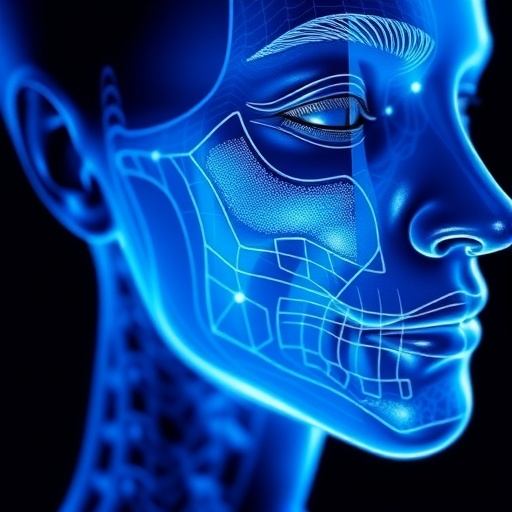A groundbreaking study led by researchers Uehara and Nakamura explores a novel approach to assessing skin barrier function through the measurement of transepidermal water loss (TEWL). This alternative method leverages the principles of skin electrical impedance, promising a significant advancement in dermatological research and clinical applications. By focusing on the skin’s electrical properties, this innovative technique offers improved precision and potentially greater convenience compared to conventional TEWL measurements.
Transepidermal water loss is a pivotal indicator of skin barrier integrity. It reflects the rate at which water evaporates from the skin’s surface and serves as a critical marker for various dermatological conditions, including eczema and psoriasis. Traditional TEWL measurement techniques typically rely on devices that capture the rate of water vapor loss over time. However, these methods can be invasive, time-consuming, and may vary significantly based on environmental conditions. Uehara and Nakamura’s research presents an alternative that could revolutionize how this vital health metric is assessed.
The basis of this new approach lies in the electrical impedance of the skin, which is directly affected by its moisture content. In essence, hydrated skin displays lower electrical resistance, while dehydration leads to higher resistance. This intrinsic relationship could allow for a less invasive and quicker assessment of skin condition by measuring impedance instead of relying solely on the weight of evaporated water.
By integrating electrical measurements into the evaluation of skin health, Uehara and Nakamura provide a dual advantage. Their method not only offers speed but also incorporates a more holistic view of skin hydration. This approach reflects a deeper understanding of the skin’s physiology and challenges the traditional paradigms that have dominated dermatological assessments for years.
One of the remarkable aspects of employing electrical impedance is the non-invasive nature of the measurement. Traditional methods, which often involve specialized equipment and require patients to remain still for extended periods, can be cumbersome. In contrast, using electrical impedance could lead to more patient-friendly assessment protocols, fostering greater adherence to routine checks by both clinicians and patients.
Moreover, the research underscores the potential for this new method to provide real-time feedback on skin hydration status. Imagine a scenario where skincare professionals can offer instant assessments and recommendations during a single consultation. This immediacy could transform patient care, allowing for tailored treatment plans based on objective data rather than solely subjective observations.
The implications of this research extend into realms beyond dermatology. For instance, the insights gained from this study could also benefit fields such as sports medicine, where skin hydration plays a crucial role in performance and recovery. Athletes often experience variations in hydration levels, affecting not only their skin health but overall physical performance. Utilizing electrical impedance could enable sports specialists to monitor and manage hydration more effectively.
Additionally, the study may yield benefits for skin care products and cosmetics. With the beauty industry increasingly leaning towards transparency and evidence-based claims, the ability to accurately assess skin hydration could encourage companies to formulate products that genuinely enhance the skin’s barrier function. By backing product claims with physical data, brands would foster greater consumer trust and satisfaction.
Furthermore, the research raises intriguing questions about the broader implications of skin health in systemic conditions. Industries focusing on holistic health could leverage this method to understand how skin barrier function correlates with overall well-being. From hormonal imbalances to nutritional deficiencies, various factors affect skin hydration, and this approach could unveil intricate connections between skin integrity and systemic health indicators.
Environmental and lifestyle factors also play a critical role in skin hydration. Variability in humidity, temperature, and exposure to pollutants can influence TEWL, making it a complex area of study. Uehara and Nakamura’s method may mitigate some of these variables by offering a more consistent and standardized means of assessment. As such, their research could provide a valuable framework for analyzing how external factors impact skin hydration and overall skin health.
The findings shared in this study are set to inspire further research within the scientific community, encouraging additional exploration into the applications of electrical impedance in various dermatological assessments. As researchers delve deeper into this concept, the potential for expanding its usefulness into other areas of medicine and health becomes increasingly apparent.
Uehara and Nakamura’s work is emblematic of a larger trend in medical research where innovative technologies pave the way for refined methods of evaluation. Their findings not only contribute to advancements within dermatology but also set a precedent for how emerging technologies can be harmonized with traditional medical principles for enhanced patient outcomes.
In conclusion, this innovative approach to assessing transepidermal water loss through skin electrical impedance marks a significant milestone in dermatological research. By offering a non-invasive, efficient, and potentially more accurate means of evaluating skin hydration, Uehara and Nakamura’s study holds promise for transforming skin health assessment. As the research landscape continues to evolve, the integration of new technologies into clinical practice remains crucial for driving improvements in patient care.
The future of dermatological health may very well hinge on such innovations, propelling the industry forward with scientific rigor and a commitment to enhancing patient outcomes. The journey towards understanding skin hydration remains ongoing, and Uehara and Nakamura’s contributions are set to light the way.
Subject of Research: Measurement of transepidermal water loss using electrical impedance.
Article Title: An Alternative Approach Based on Skin Electrical Impedance to Determine Transepidermal Water Loss for Skin Barrier Function Assessments.
Article References:
Uehara, O., Nakamura, T. An Alternative Approach Based on Skin Electrical Impedance to Determine Transepidermal Water Loss for Skin Barrier Function Assessments. J. Med. Biol. Eng. (2025). https://doi.org/10.1007/s40846-025-00967-y
Image Credits: AI Generated
DOI: 10.1007/s40846-025-00967-y
Keywords: transepidermal water loss, electrical impedance, skin barrier function, dermatology, skin hydration, non-invasive assessment




